How To Prevent Water From Entering Basement
This is a invitee blog post by Silas Irish potato-Ellis, owner of Murphy Home Inspection in Portland Oregon.
Water in the crawlspace is an issue we run into in homes all also often.
To the home buyer, it tin can be quite alarming to find water in the basement or crawlspace. Water under the home is most oft an issue that tin can exist corrected.It's important to place the source of the moisture to improve sympathize what course of action tin be taken to continue the area dry and to foreclose impairment to the home or structure. Here is a listing of the most common means that water tin get into a crawlspace or basement.
ane. GUTTER & DOWNSPOUT Problems
Ane of the almost common sources of basement and crawlspace water is poor rainwater management. Debris from surrounding trees and vegetation tin can all as well easily overwhelm and clog gutters and downspouts, causing gutter pooling and overflow, and clogged downspouts.
Underground drainage pipage tin also become clogged or broken, leaving the downspouts to cascade rainwater correct next to the foundation.
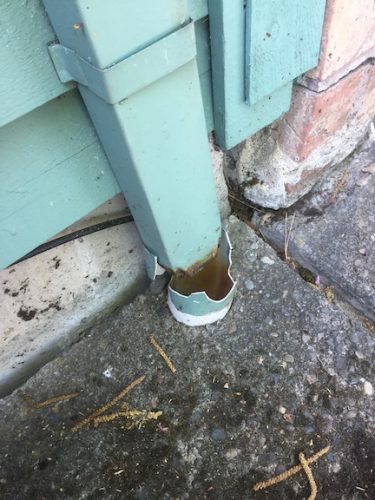
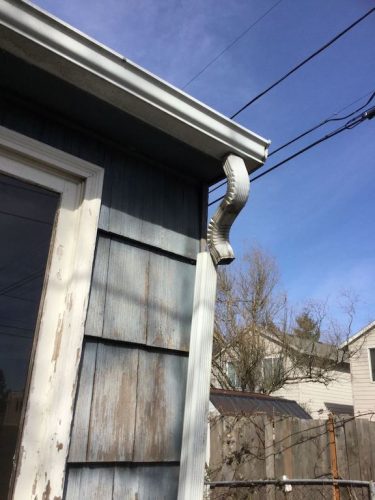
2. NEGATIVE GRADING Around THE Dwelling
Landscaping around the foundation should slope down and abroad from the home. This will encourage h2o to drain away from the foundation, and not into the basement or crawlspace. Negative grading is an issue we come across all too oftentimes every bit home inspectors, in both new construction and old homes. Too, remember that mulch does not count equally grading. Mulch is porous and water will baste right through it and onto the soil. Bank check how deep the mulch surrounding the abode is – exist certain that the soil is what makes a positive slope, not the mulch.
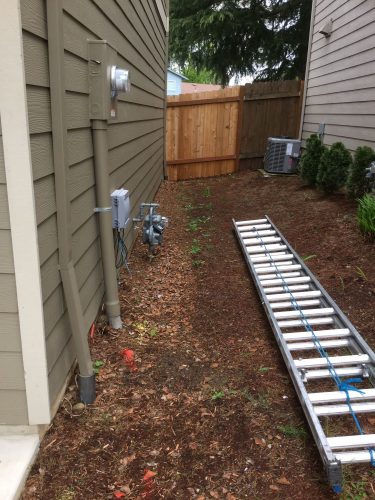
3. GROUNDWATER, OR SUBTERRANEAN WATER
In some instances, rainwater or snowmelt may saturate the soil around the home, especially in the wetter months of the yr or during a spring thaw. When the soil becomes saturated, the water will discover the path of least resistance, which could be the big pit in the ground that was dug for your crawlspace or basement.
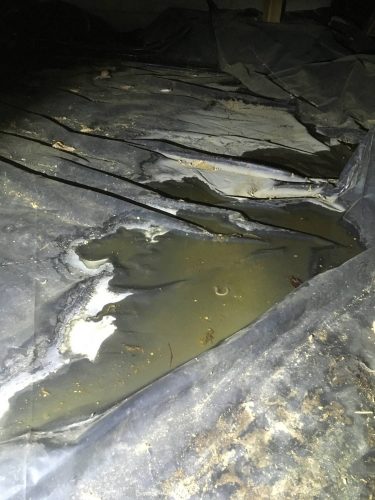
4. DRAIN OR SUMP-PUMP Not FUNCTIONING
Crawl spaces can often be neglected over long periods of time. And non until getting a abode inspection practice homeowners realize that a drainage system has not been operation properly. Sump pumps should exist checked and serviced annually to ensure they volition keep to operate as needed. Low point drains in the crawlspace can become filled with debris, or by plastic vapor barriers that preclude h2o from flowing to the drain.
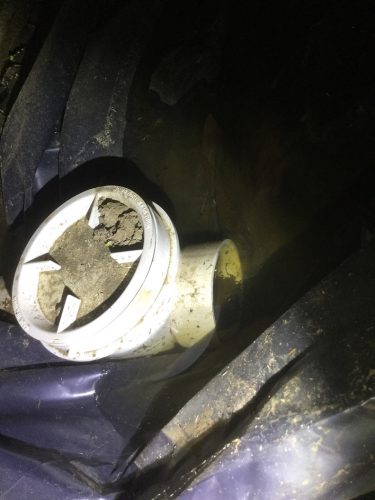
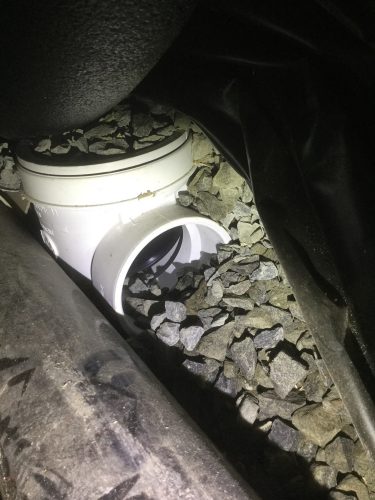
5. PERVIOUS FOUNDATION MATERIALS
Foundation waterproofing has go more common, especially in homes built in the last 20-30 years. There take been great technological advances in the past few decades merely even with the latest technology, consummate waterproofing isn't a guarantee.
Foundations on older homes may be built of more than porous materials such as terra cotta cake, brick or CMU concrete cake. These materials have more joints or are more porous and may let more wet into the domicile rather than a concrete foundation. A properly installed drain and trench system or sump pump can still keep moisture levels at an adequate level.
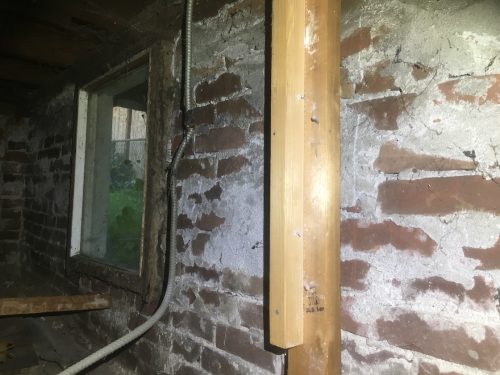
6. DEFECTIVE WINDOW-WELLS OR VENT-WELLS
Wells surrounding vent openings and windows may not be installed properly. Ensure they are at least several inches above the surrounding soil, and that they are secured to the foundation wall. Otherwise, water may detect it's way effectually the well and into the vent or window.
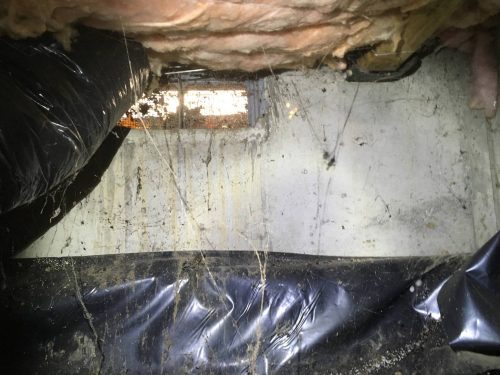
7. CRACKS OR GAPS IN THE FOUNDATION
Larger cracks sometimes develop in the foundation over time, as the foundation may have shifted or sank. Specially effectually areas where rainwater has not been dealt with. Such as a downspout that has been draining near the foundation for a long time. This can wash abroad soil, which can lead to shifting in the foundation. Cracks are an easy path for h2o to find. Ane solution, if the gap is wide enough, can be to inject an epoxy sealant into the cleft to seal the gap. In the photo seen to the right, the sprinklers were watering up against the foundation. The excess water institute its way through the fissure between 2 separate pieces of the foundation – the basis and the stem wall.
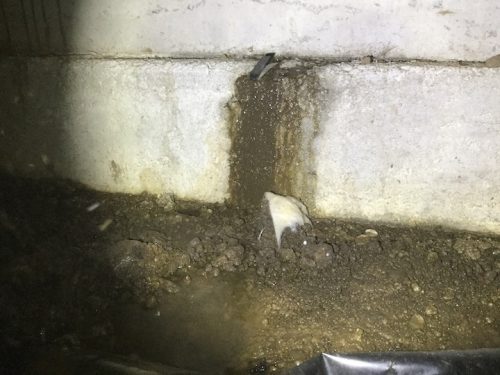
viii. LEAKING PIPES AND FIXTURES
Sometimes the easiest source of water to diagnose. When h2o is observed in the crawlspace, e'er check higher up and around the standing h2o to see if there are any signs of a leak from a distribution or drain pipe.
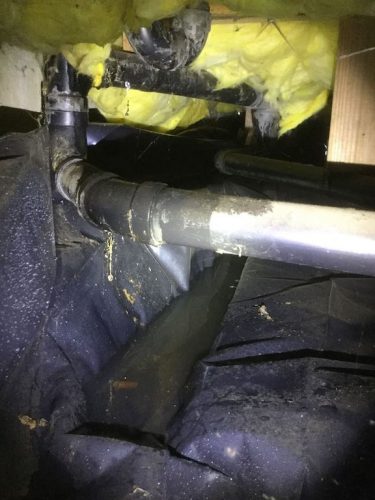
Tub and shower drains are a common culprit, equally well equally tiled showers.
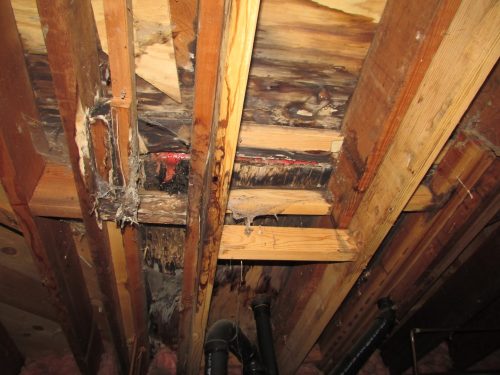
9. LANDSCAPE OVER-WATERING
Irrigation sprinkler heads that are directing water about the foundation tin can bring lots of water near the foundation. Make sure that sprinklers heads are not pointed most the foundation, and garden beds are not over-watered.
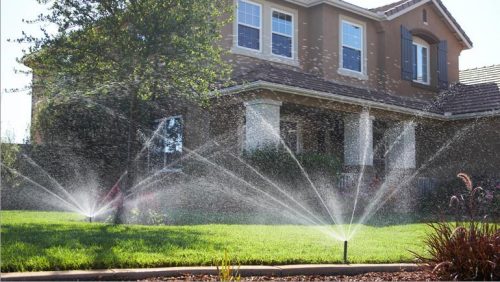
Basements and crawlspaces ofttimes go neglected, and some crawlspaces go unchecked for decades, we recommend checking your crawlspace at to the lowest degree twice a twelvemonth for leaks and issues, the autumn and jump are good times to cheque for unwanted standing water. We also recommend checking your sump-pump or low point drain to ensure functionality. Standing h2o near the foundation and footings tin can atomic number 82 to soil shifting or settling and can crusade structural issues. A pocket-sized amount of care and attending can prevent plush future repairs.
Author: Silas Murphy-Ellis, Potato Domicile Inspection
How To Prevent Water From Entering Basement,
Source: https://structuretech.com/nine-ways-for-water-to-enter-your-basement-or-crawl-space/
Posted by: greenewheyes.blogspot.com


0 Response to "How To Prevent Water From Entering Basement"
Post a Comment